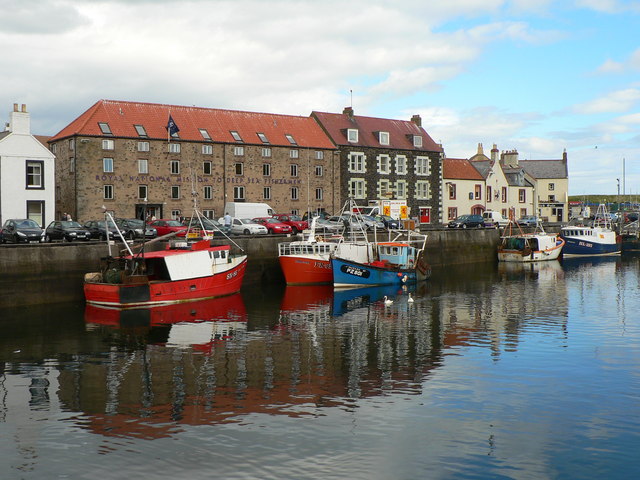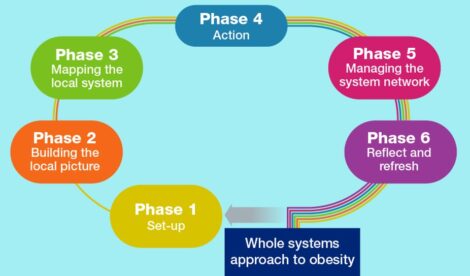Capitalising on community networks in the Borders

In the Borders, stakeholders are working together to ensure Eyemouth – a small town and civil parish in Berwickshire – is a happy, healthy and safe place to live. By adopting a Whole Systems Approach (WSA) they aim to give current and future generations a good quality of life, increase access to nutritious food and facilities, and reduce health inequalities. Here we speak to Nichola Sewell, the Eyemouth pilot lead and health improvement lead for NHS Borders’ Joint Health Improvement Team – to find out what they’ve achieved to date, along with next steps.
1. A Whole Systems Approach (WSA) to diet and healthy weight is being adopted by local areas across Scotland and will be used to pilot community interventions. What does this mean in practice and from your experience to date in the Borders, how do you feel it can help us to support local communities to lead a healthy lifestyle?
A Whole Systems Approach (WSA) is about collaborative working between agencies and communities. It is about harnessing all the assets available to understand what is already in place, so that all stakeholders can agree what to take forward collectively. Adopting a WSA in Eyemouth has been a fast paced and complex piece of work which has seen us follow the Leeds Beckett methodology of mapping out causes and consequences of obesity, allowing us to identify what actions are needed to support healthy weight as part of a community led approach. We have also adapted the approach to ensure our work now forms part of COVID-19 recovery plans. Our working group are committed to joint planning and raising awareness of all that is on offer in Eyemouth, utilising their community networks.

2. What has been achieved so far in the Borders to adopt a Whole Systems Approach and progress the discovery phase of your project?
Collaborative working between the Eyemouth Community, Third Sector, Scottish Borders Council and NHS Borders has allowed us to form governance and working groups, and facilitate two virtual workshops.
These workshops have helped us to develop a shared understanding of:
- What already exists and works well to influence healthy weight among the local population in Eyemouth
- Key priorities and what matters to people in Eyemouth, so that we can develop a community led action plan
A wide range of local participants joined us and we took advantage of digital tools to capture the discussions and outcomes. At the first workshop we produced four causal maps and developed our vision statement.
We then reviewed this shared vision, consolidated the key priorities and drafted an action plan at the second workshop.
Participants provided positive feedback on their experience and the working group gained further understanding of projects that are important to the Eyemouth community, including a greenspace initiative.
Some of the other key things we’ve achieved during this first phase of the pilot include:
- Development of the Eyemouth Gateway to Good Health branding based on our shared vision
- Production of a draft action plan for feedback and agreement
- Commitment from participants to meet again and lead on specific actions
- Increased community understanding of the WSA, how to apply it in practice and the 9 systems behaviours, allowing us to now apply for phase 2 grant funding
3. Why have you chosen Eyemouth as an area to invest in?
We chose Eyemouth as an area to invest in due to its many strengths including:
- Population size: 3,538 people (2018)
- Tourism opportunities
- Partnership working
- Thriving community
- Range of community groups and activities (across life stages)
- Increase in participation levels – Active Schools work
- Children and families regular use of settings based activities
- The Good Food Partnership
- Volunteering culture
- Infant Feeding Programme
Child poverty is a growing concern across Scotland and this is also a challenge in Eyemouth, with 15.6% of children living in low income families and 14.3% of the population being deprived of an income. Despite this, there is a strong community spirit and long history of partnership working among public sector colleagues in the area. Practitioners are already working in creative ways to engage people in health improvement – so we have a chance to further nurture and invest in this.
4. How has Covid-19 impacted the adoption, design and roll out of a whole systems pilot in the Borders? What are the challenges and opportunities?
COVID-19 has inevitably stalled some of our efforts to implement a WSA, including initial planning meetings and discussions about how to make the most of this approach. We were however delighted to pick this up again, alongside our Local Authority colleagues, as part of pandemic recovery planning. We had built new relationships with Local Authority colleagues through partnership work to respond to welfare support needs identified via our Community Assistance Hubs. The Eyemouth Community had engaged in a collective response to the pandemic, leading on new ways of working that supported people to stay well in their communities. Overall, the timing was right for us to progress this programme of work.
5. How are you working with other early adopters in the East of Scotland and across the country to share learning?
We have included some of our East of Scotland partners in our working and governance groups so that we can share learning, along with taking part in regular meetings with the other regional pilot leads. We’ve participated in national training and engage with the other early adopter areas across the country, making the most of online communication channels throughout the pandemic.
6. Tell us about your next steps and what you hope to achieve over the coming months…
We’ve produced a draft action plan based on the priorities we identified during the first workshop, and are intending to meet with local stakeholders to:
- Agree actions and identify leads to deliver on these
- Invite stakeholders to chair future meetings to embed our community led approach
- Develop our communications plan so that we take advantage of the full range of channels and share what’s taking place locally
- Work with stakeholders to develop a proposal for phase 2 grant funding